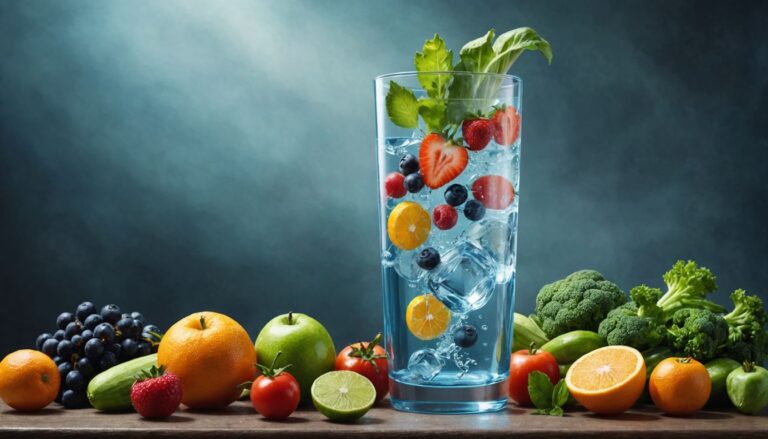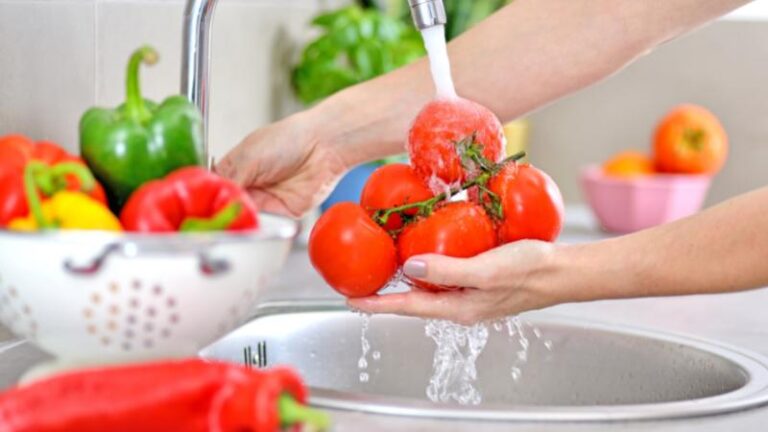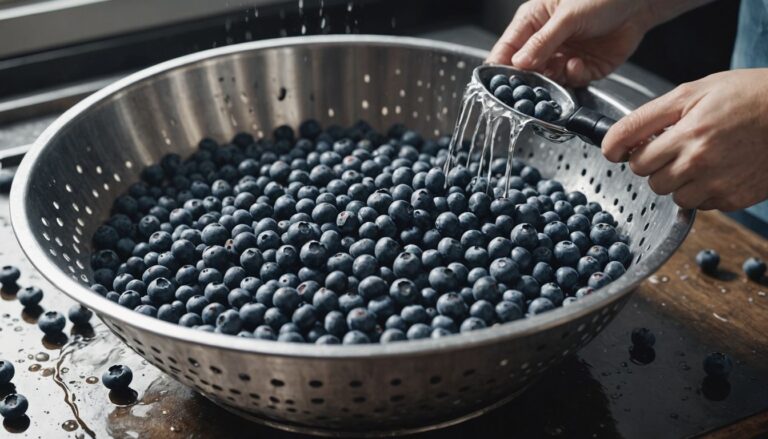How To Wash Fruits With Baking Soda
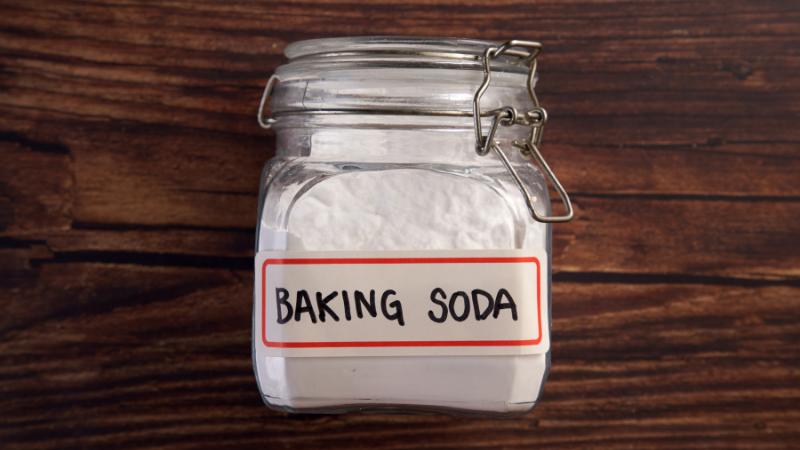
I recently discovered the wonders of washing my fruits and vegetables with baking soda, and I was SHOCKED at how much better they tasted afterward! Seriously – all it took was a simple solution of baking soda and water to make them taste so fresh and delicious.
But even though it only takes a minute to wash your fresh produce this way, there’s still a right way and a wrong way to do it. If done incorrectly, you could actually end up making things worse instead of better. So today I want to share what I’ve learned about the best way to clean your produce using this natural method.
Whether you’re trying to get rid of pesticides or just looking for ways to make your food last longer – this blog post will show you exactly how to wash fruits with baking soda in order to reap all its benefits without any unnecessary hassle or headache. Read on as I describe each step in detail!
What Are The Benefits Of Washing Fruits With Baking Soda?
A baking soda bath can provide a myriad of health benefits. First, it helps remove any wax, dirt, and debris that may be on the surface of the fruit. This ensures that you won’t ingest any hazardous chemicals or materials when eating them.
Baking soda has antiseptic properties, so it can also help kill off bacteria and germs that might be lingering on the fruit’s skin. It’s especially effective when cleaning delicate fruits like berries as they are more susceptible to contamination due to their thin skin.
Finally, it is an all-natural product so you don’t have to worry about using harsh chemicals or potentially hazardous materials while washing your produce. You just need some baking soda and cold water!
What You Need
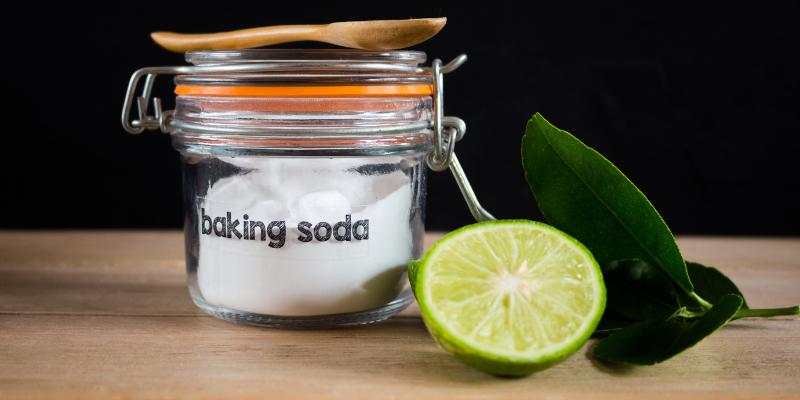
Before you get started, there are a few items that you need to have on hand. The great thing is that these items are all easy to find and most probably already have in your home.
The first item is the star of this process—baking soda! You will want a box of it for this task.
Next, you will also want some water which can come from your faucet or bottled water if desired.
In addition, it’s helpful to have a bowl big enough for the amount of fruit you plan on washing as well as a colander to hold the fruits while they’re soaking in the baking soda solution. Lastly, make sure you have a sponge or cloth handy to help scrub off any remaining residue afterward.
Baking Soda
Baking soda is an essential ingredient in this process. It not only helps to remove dirt and pesticide residue, but it can also help reduce any strong odors that may be on the fruits.
I suggest using a non-iodized baking soda like Bob’s Red Mill or Arm & Hammer as they are natural and organic, making them ideal for use on fruit.
You don’t need too much of it for this recipe – about 1 teaspoon should do the trick! I recommend adding more if you feel like it isn’t doing enough to clean your fruits or if you have particularly dirty produce.
Water
After you have gathered the other items, you need to get a bowl of water. Fill it with enough water to cover your fruits and vegetables.
It doesn’t have to be too much as long as all of the produce is submerged in the water when you add them later. This is important because that’s how the baking soda will react with the dirt and pesticides on them.
I recommend using filtered or distilled water for this process (read: How to make purified water), but if you don’t have access to these options then tap will work just fine. Just make sure that it isn’t too cold or hot so that it won’t shock your fruits when they are added to it!
Bowl
The first item you’ll need is a bowl. I prefer to use a large mixing or salad bowl, as it allows me to have enough room for the fruits and baking soda solution.
Make sure that your bowl is clean before you start, and if you’re concerned about any lingering bacteria, give it a quick rinse with hot water before beginning.
If possible, try to find one that’s bigger than necessary, as the extra space will make swirling the fruits around in the solution much easier.
As an alternative, you could also soak your produce in your kitchen sink. If this is the case, remember to sanitize it to make it totally safe.

How A New Piece Of Technology Provides The Drug Free Pain Relief You’ve Been Looking For
If you’re anything like me, you don’t want to use drugs or pills that you’re unsure about.
Colander
A colander is like a large sieve or strainer that allows you to easily rinse and dry the fruits after they have been soaked.
The holes in the colander will help to remove any excess water, dirt, or debris from the fruit. Making sure your fruits are completely dry before consuming them is essential for safety and preserving freshness.
Sponge
In addition to the other items, you’ll also need a sponge.
The sponge is used to gently scrub away any dirt or debris that may still be stuck on the fruit. Make sure that it’s only damp, not wet as you don’t want to add too much moisture.
You can also use a soft brush if you prefer, but ensure that it’s not too abrasive so as not to damage the fruit’s skin.
Start by lightly rubbing each piece of fruit with the sponge or brush and then rinse off in cool water afterward.
How To Wash Fruits With Baking Soda: The Process
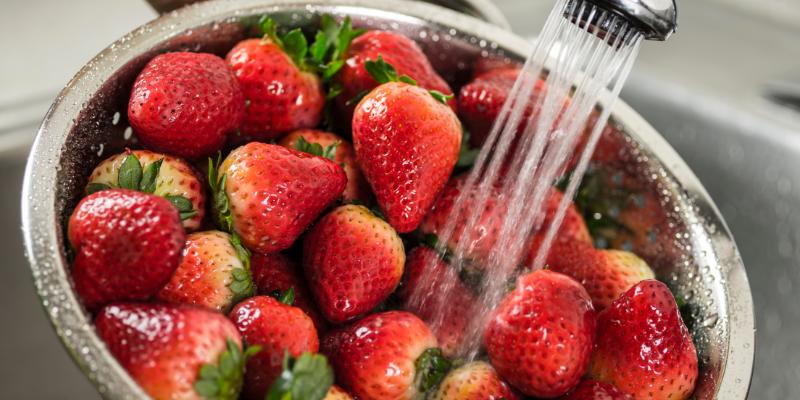
Now that you know exactly what you need to pursue this healthy choice, it’s time to learn the process.
I find that the best way to wash fruits with baking soda is to start by filling a bowl with water and adding 1 teaspoon of baking soda for every 4 cups of water.
But, let’s proceed step-by-step.
1. Start with a bowl of water
First, you’ll need to start by filling a bowl with cold water. The temperature of the water doesn’t matter too much for this step, but just make sure it isn’t too hot or too cold.
I typically fill it up about halfway so that there’s enough room for me to swish the fruits around and get them thoroughly soaked with baking soda solution.
If you don’t have a large bowl, two smaller bowls can also work just as well.
At this point, I like to add a few drops of dish soap into the bowl if I’m washing fresh produce from my garden that may be carrying dirt or any other particles – it helps break down oils and grime more easily while providing some extra protection against bacteria before we add in the solution.

How A New Piece Of Technology Provides The Drug Free Pain Relief You’ve Been Looking For
If you’re anything like me, you don’t want to use drugs or pills that you’re unsure about.
2. Add baking soda to the water
When it comes to adding baking soda to the water, I find it helps to use a measuring spoon. This way, you can accurately measure the amount that your fruits need.
I usually start with one tablespoon of baking soda per cup of water. If you are washing a lot of fruits, like apples or oranges for example, then you may need more than one cup of water and therefore more baking soda.
Once the water is in the bowl and all traces of soap have been rinsed away, sprinkle in the desired amount of baking soda and mix it around until it’s dissolved completely into the water.
Now your fruity bath is ready!
3. Place fruits in the bowl
The next step is to place the fruits you want to wash in the bowl. Make sure that all of the fruits are submerged so they can be thoroughly cleaned.
If you’re cleaning more than one type of fruit, make sure to keep track of which fruits are which as it can often be hard to tell apart after they have been immersed.
For larger pieces of produce such as apples and oranges, I usually like to cut them into smaller chunks as this helps speed up the washing process and ensures that each part gets exposed to enough of the baking soda solution for a proper cleanse.
4. Swirl the fruits around
Once you have added the baking soda to the bowl of water, it’s time to swirl the fruits around. Make sure all surfaces of the fruit are covered in the baking soda-water mixture.
I find that is easiest to do when you use your hands and gently move them over every part of each piece of fruit for about 30 seconds before moving on.
It might be a little messy but it is important that no surface goes uncovered. If necessary, add more baking soda to the mixture for extra cleaning power.
5. Let the fruits soak for 10 minutes
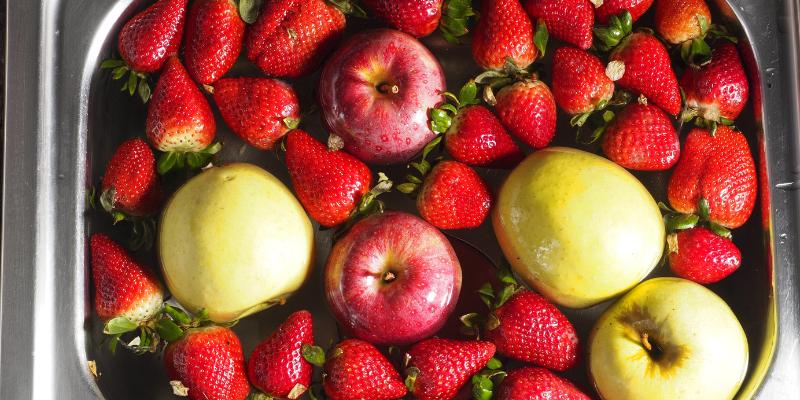
After adding the baking soda to the water, slowly place all of your fresh fruits or leafy greens into the bowl and give them a swirling motion with your hand. This is the most effective way to make sure that each piece is evenly covered in the solution.
Let them soak for 10 minutes so that any bacteria or dirt will be easily removed from their surfaces. During this time you can use a sponge to lightly scrub away any stubborn marks or residue on each fruit.
After letting them sit for 10 minutes, take out each piece one at a time and rinse it off in another bowl of clean water before transferring it onto a colander or dish drainer.
Finally, dry off each piece with paper towels before consuming or storing them away for later use!
6. Rinse the fruits
After letting the fruits soak in the baking soda solution for 10 minutes, it’s time to rinse them off.
I usually just run fresh water over them directly from my kitchen faucet, giving each fruit a few good rinses to make sure all of the baking soda is gone. I then transfer them into a colander and let any excess water drip off before drying them with a clean kitchen towel or paper towel.
The nice thing about washing your fruits with baking soda is that you don’t have to be overly aggressive about scrubbing or brushing off dirt or residue (although you can if needed).
The baking soda does an amazing job at lifting away dirt and bacteria from your produce without damaging their delicate skin.
7. Dry the fruits
The final step in washing your fresh fruits with baking soda is to dry them off.
I like to do this by laying out the fruits on a paper towel. Make sure you spread them out so they don’t touch each other, as this can cause them to stick together and create unwanted spots or marks.
Once they have dried completely, store the fruits in an airtight container until you are ready to use them.
This will help keep them fresher for longer and allow you to enjoy their delicious natural flavors without the worry of contamination from dirt or bacteria!

How A New Piece Of Technology Provides The Drug Free Pain Relief You’ve Been Looking For
If you’re anything like me, you don’t want to use drugs or pills that you’re unsure about.
Conclusion
After following these steps on how to wash fruits with baking soda, you should be able to enjoy your produce knowing that they are free from dirt and bacteria, and good for your health.
As you can see, this is an easy, inexpensive, and effective way to ensure their cleanliness before consuming them.
I hope this guide has helped show you the benefits of washing fruit with baking soda as well as how to do it effectively.
With a few simple steps, you can save yourself time and money by cleaning produce right in the comfort of your own home.
FAQ – Frequently Asked Questions
Which produce is typically most heavily contaminated?
Based on the EWG list, the most contaminated produce typically includes strawberries, spinach, kale, nectarines, apples, grapes, peaches, cherries, pears, tomatoes, celery, and potatoes. These types of produce can be more susceptible to dirt, bacteria, and other contaminants due to their growing conditions.
Is it better to wash fruit with vinegar or baking soda?
Both vinegar and baking soda can be used to wash fruit, but baking soda is generally considered more effective because its alkalinity helps neutralize acidic pesticides. A 2017 study found that submerging apples in a baking soda solution for 2 minutes removed more pesticide residue than a 2-minute soak in bleach. Vinegar is also effective at killing bacteria and can be used to disinfect produce.
Can you mix vinegar and baking soda?
It is not recommended to mix them for cleaning purposes as it can be ineffective or even dangerous. Instead of mixing them together for cleaning purposes, use them separately. When vinegar and baking soda are mixed together, they produce carbon dioxide gas, liquid water, acetate ions, and sodium ions. The carbon dioxide gas is what produces the bubbles.

